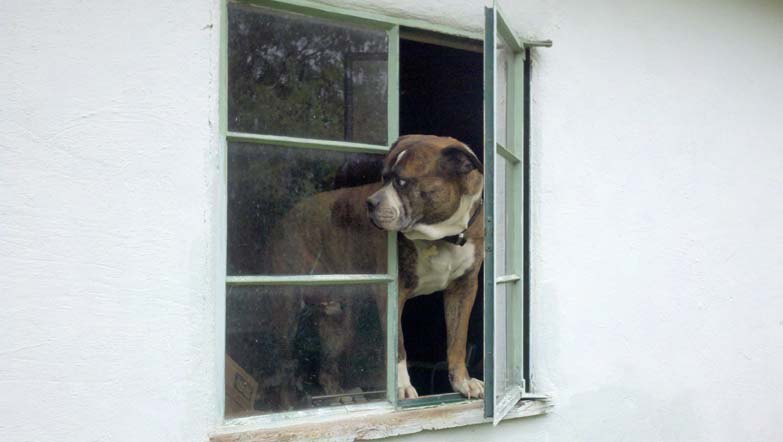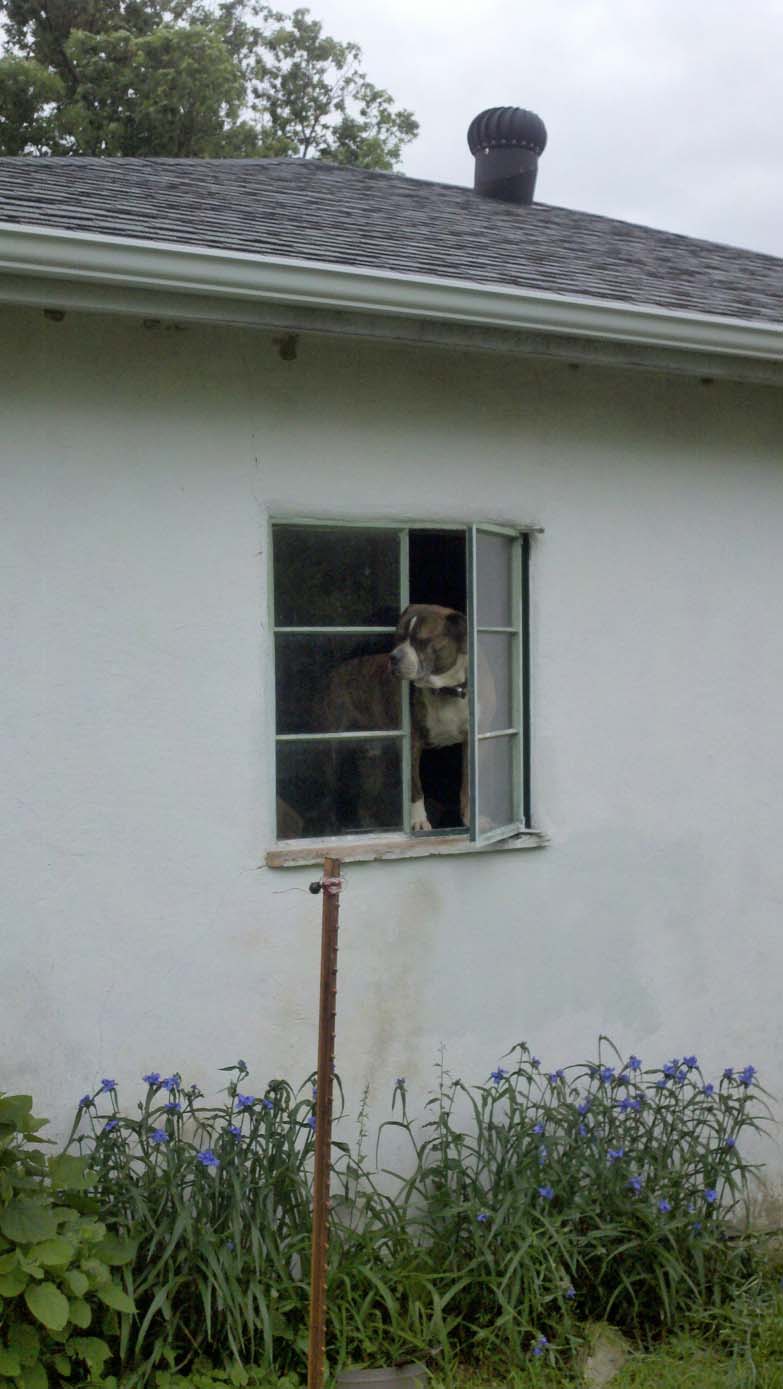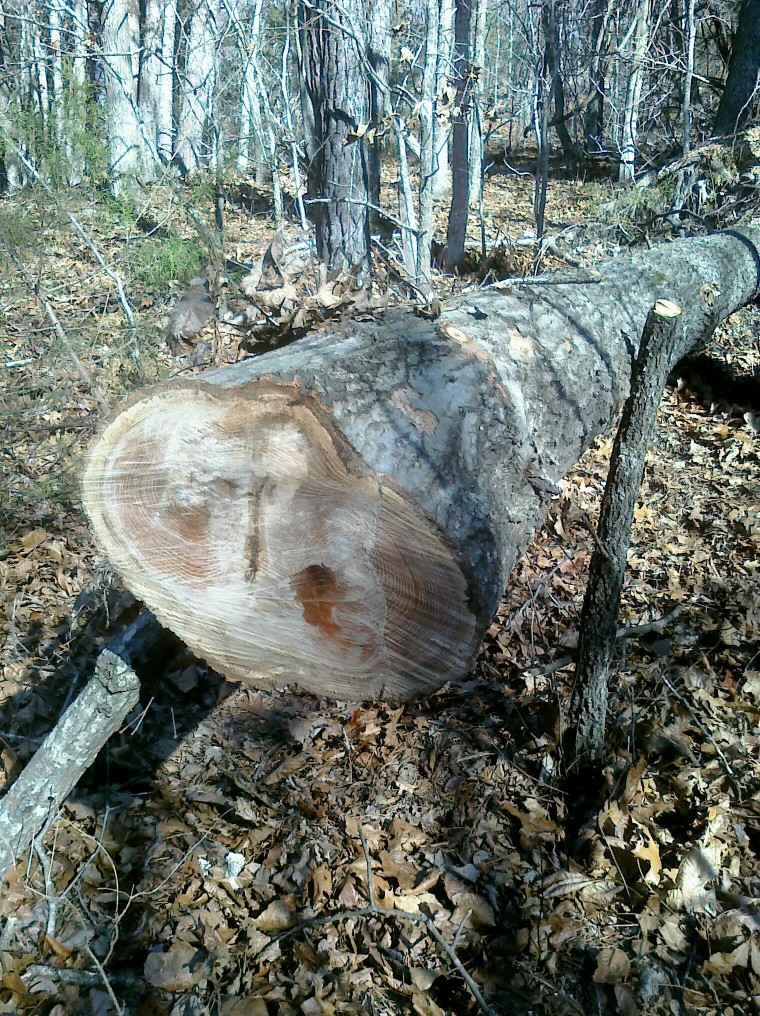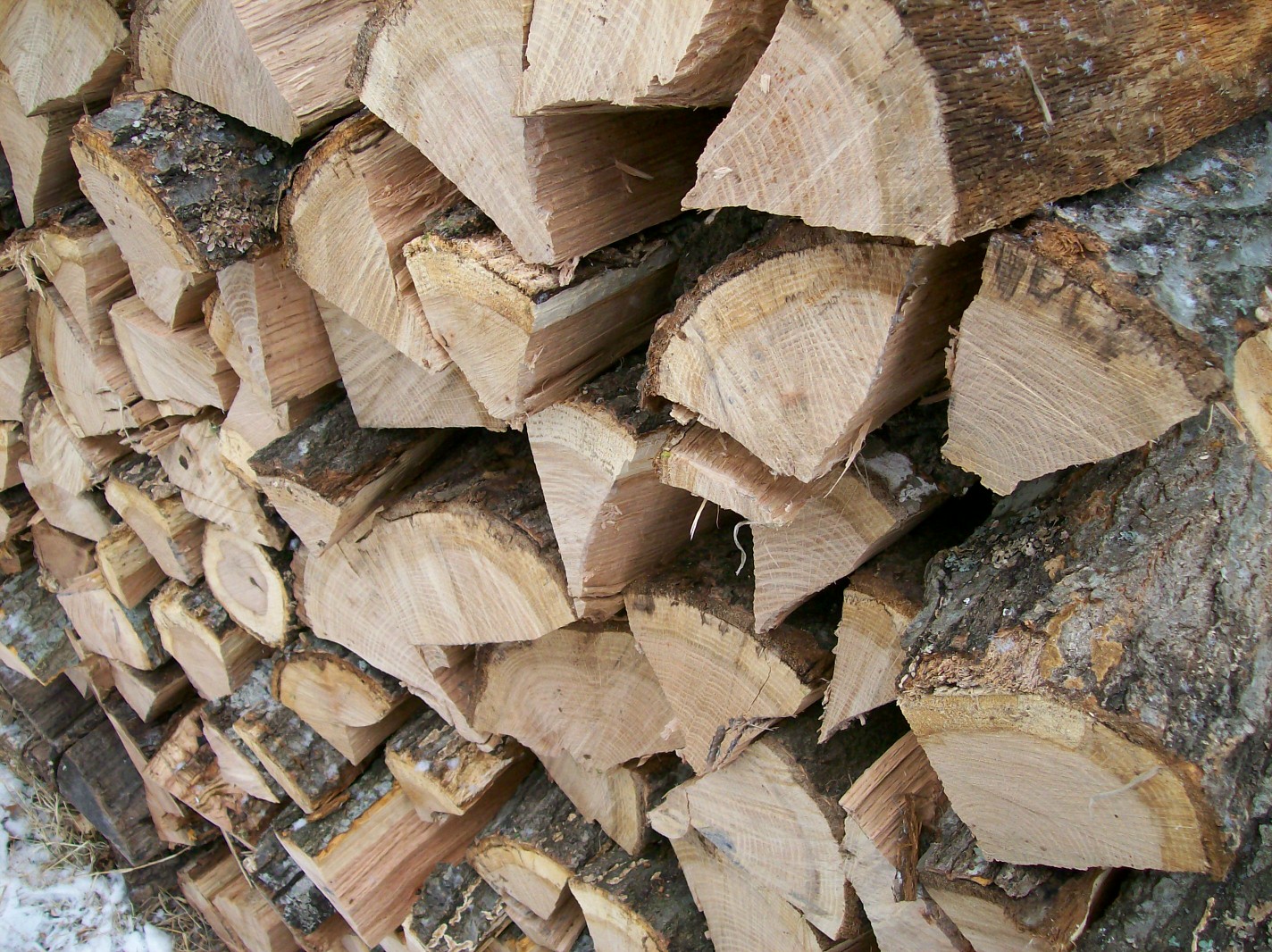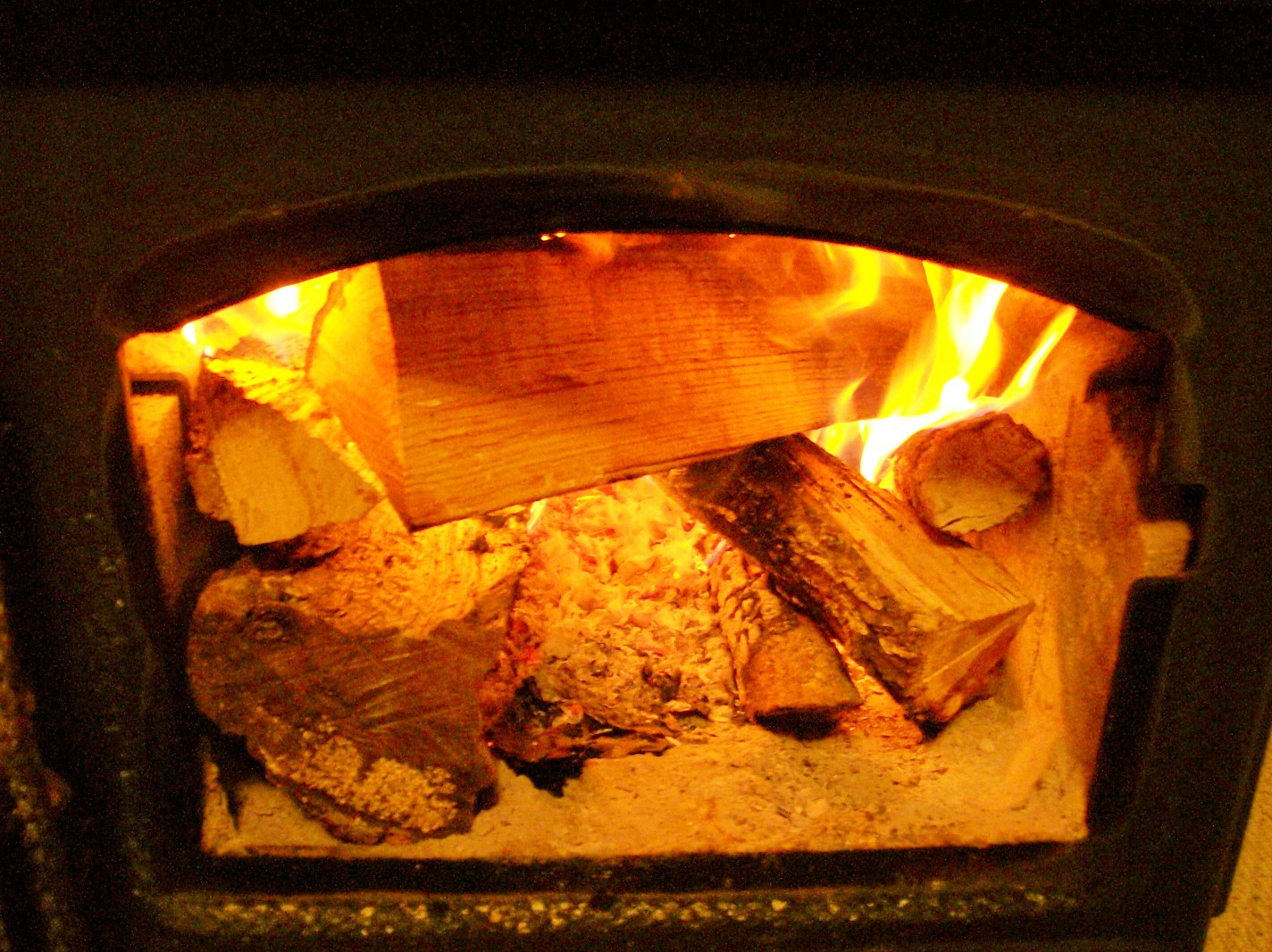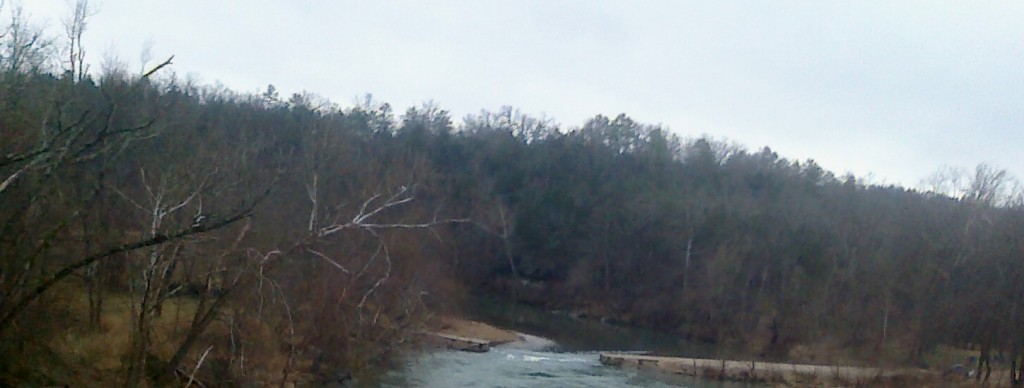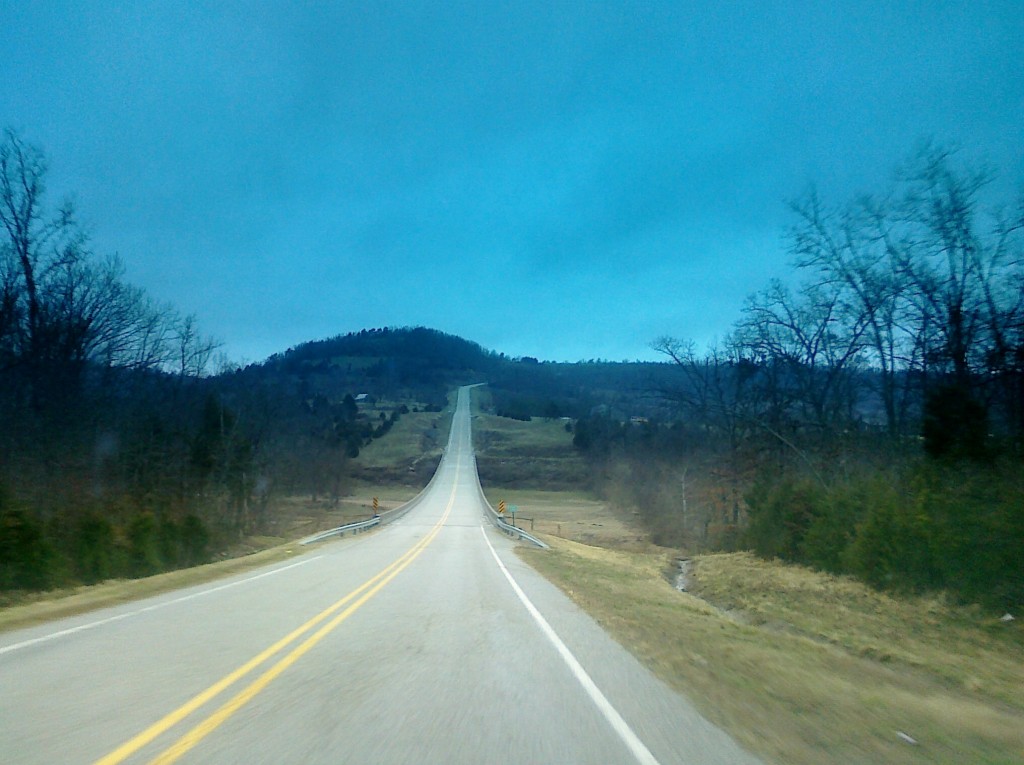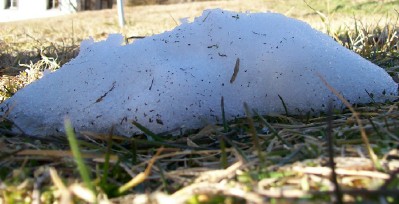Boys throw stones at frogs in sport. But the frogs do not die in sport,
they die in earnest.
This Must be the 13-Year Cicada/Locust
Wild Rose in Bloom
Chandler Accidently Locked in the Neighbor’s Garage
Box Turtles Embark On Yearly Searches
Don’t Make Me Angry…
Directly behind our house there is a spring that is the beginning of a small creek. Much of the water is captured in an 800 gallon storage tank built into the hillside in the 1940s. The overflow water from this concrete holding tank seeps into the ground and normally flows placidly out of the bottom of the hill. Theory has it that this spring, which has not gone dry in the past 100 years, is fed by an underground lake inside the mountain that forms our eastern border.
This gentle spring, home of happy salamanders and shy crawdads, becomes increasingly angry as rain falls. After the recent foot of rain fell, the spring voiced its indignant displeasure with an engraged roar that could be heard from a surprising distance. The photograph above displays the beauty of the spring, but not the anger.
Turn Around – Don’t Drown
Here in the hollow we’ve received about ten inches of rain in the past week. That is a lot of water. It manifests itself in our normally placid springs roaring with anger and temporary creeks appearing in unexpected places. All of this water heads for Keels Creek and then makes a left-hand turn into the Kings River.
The USGS monitors the Kings River at the Grandview Bridge not too far from here. It’s not unusual for the river to be knee deep at this spot. Three days ago the river crested at 35.47 feet at the Grandview Bridge, the 5th highest depth on record.
We observed the river from the bridge when it was about 27 feet deep and it was a muddy, rolling sight to behold. My understanding is that the bridge went underwater when the river crested and the highway was closed. The slogan used for times like that is “Turn Around – Don’t Drown.”
Semi-Circle of Life
Trigger Gap
Upon a Winter’s Bat
I was surprised at dusk to look up and see a large solitary bat at treetop level flying slowly toward the creek that drains the biggest spring in the hollow. Even with the warm weather the last few days it seemed early to see a bat – but then I do not know much about these fine, non-feathered friends. In moments of mammalian confusion there is only one person to turn to: Dr. John A. Sealander, my boyhood hero. Since that is actually impossible, I pulled his book off the shelf and cracked it open toward the front where I knew the bat section to be. A Guide To Arkansas Mammals should be in every Arkansawyer’s reference section, both for practical and patriotic reasons.
Reading Professor Sealander’s thoughts on the topic I was able to narrow down the type of bat it could be. The bat I saw was unlike the normal little things we see every spring and summer, flitting around in crooked lines as if intoxicated. This bat’s sheer size and that it flew around in an orderly fashion on a warm winter’s day at twilight were clues to its identity.
A dozen or more types of bats inhabit this part of the Ozarks, but only four have the obvious characteristics my untrained eye observed. From what I read, my guess is I saw the common Big Brown Bat, but I really don’t know. It could also be a Red Bat, a Hoary Bat or an Evening Bat. I think of bats as eating mosquitos, which the little bats do, but these big ones sometimes eat things like wasps and June bugs. Interesting.
Melting Snow and Pond Spring Flow
With these spring-like temperatures, the snow is quickly disappearing. There are holdouts, however, places the midday sun has less power, as in crevices and small ravines, and on the north-facing slope of the blackberry field.

There are four springs that I know of in our portion of the hollow, and many more nearby. This particular spring flows out of a small bluff into the pond that has previously been just a mud puddle due to our “moderate” drought. We call this spring the Pond Spring for obvious reasons. It is once again flowing above ground, though not too heavily. All the moisture keeps the moss nice and healthy looking.

The amazing eroding power of this small spring has shaped much of this area of the hollow.

The flowing water of the spring slowly and methodically wears away the hillside. It gets in between rocks, washing away dirt and loosening them.

Here you see that the water has found other prey. The spring is digging out the dirt from under this bank. Eventually it will collapse.

Finally, the melted snow that powers the increased flow of the spring goes under an old livestock fence into the small pond.

I’m glad to see the pond once again filling with water. It seems to be a central meeting spot for wildlife of all sorts. As you can see, the willow trees that broke during the 2009 Ice Storm still clutter the pond, providing perches for songbirds.

The Snowman Melteth
I recently discovered the existence of the U.S. Drought Monitor out of Lincoln, Nebraska, and they’ve officially confirmed what I already suspected: the hollow is suffering a drought. Our small pond shrank into a mere mud hole this past autumn. So all of this melting snow is a welcome relief. The springs are flowing like they haven’t for a long time. The snow is disappearing at a rapid clip due to the dramatic increase in temperatures. Right now it is 64 degrees Fahrenheit in the hollow. That is a staggering 80 degree warm-up from the 10th of February. Of course, there are casualties. This snowman is almost gone.




